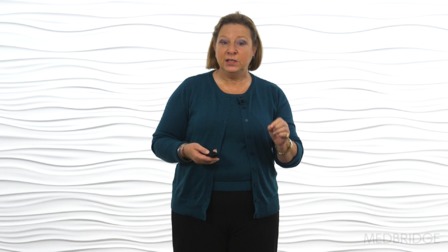Task Analysis and Task Specific Training 2: Clinical Application
Presented by Leslie Allison
12-Month Subscription
Unlimited access to:
- Thousands of CE Courses
- Patient Education
- Home Exercise Program
- And more
Video Runtime: 68 Minutes; Learning Assessment Time: 59 Minutes
Movement is shaped by interactions between the Individual, the Task, and the Environment. This course is the second in a four-part series, and will provide a clinical rationale and systematic methods for the analysis of tasks and environments to understand the demands they place on an individual, as well as the response of the individual to those demands.
Meet your instructor

Leslie Allison
Dr. Allison has been a DPT faculty member at Winston-Salem State University since 2013, and was a physical therapy educator at Midwestern University and East Carolina University from 2004-2013. She has 12 years of clinical experience in adult neuro-rehabilitation and geriatrics in acute, inpatient, and outpatient…
Chapters & learning objectives

1. Expertise in Task and Environmental Analyses Benefits Clinical Practice
To move skillfully and function successfully, individuals must solve sensorimotor problems. The demands placed on the individual by task and environmental constraints form a set of problems that must be thoroughly understood by clinicians responsible for teaching motor skills and training functional abilities. This chapter presents the clinical rationale for the development of expertise in task and environmental analysis.

2. Using a Systematic Approach to Task Analysis: Lessons from School and Sport
This chapter presents three systematic task analysis approaches used by respected professionals who teach motor skills primarily to healthy children and athletes. These methods were not designed for use in the clinic but may by adapted/adopted for clinical use. They include Ecological Task Analysis, a five step analysis, and Functional Movement Analysis.

3. Occupation Based Activity Analysis
This chapter presents a systematic and comprehensive task analysis approach developed for clinical use by an occupational therapist (Occupation-Based Activity Analysis; Thomas, 2015). A clear distinction is made between analysis of the task vs. the patient’s performance of the task; ultimately both are needed.

4. Gentile’s Taxonomy of Motor Skills: Concurrent Task and Environment Analysis
This chapter presents a systematic task analysis approach that incorporates concurrent environmental analysis. While less comprehensive and thorough than Occupation-Based Activity Analysis, it is easily understood and may be rapidly applied.

5. Summary and Clinical Implications
The demands placed on the individual by task and environmental constraints form a set of problems that must be thoroughly understood by clinicians responsible for teaching motor skills and training functional abilities. This chapter summarizes five possible methods for task and environmental analysis and offers suggestions for practical clinical application.


